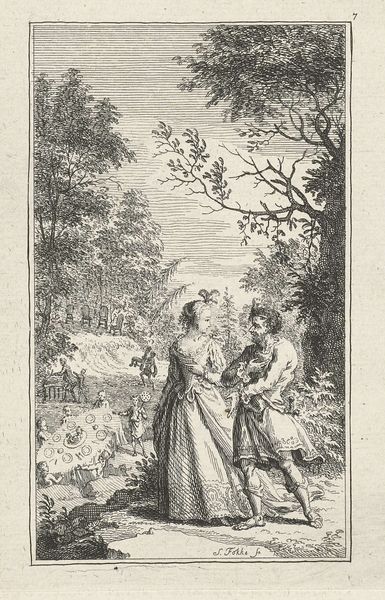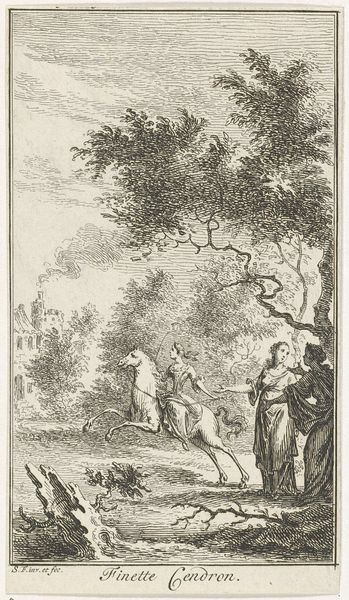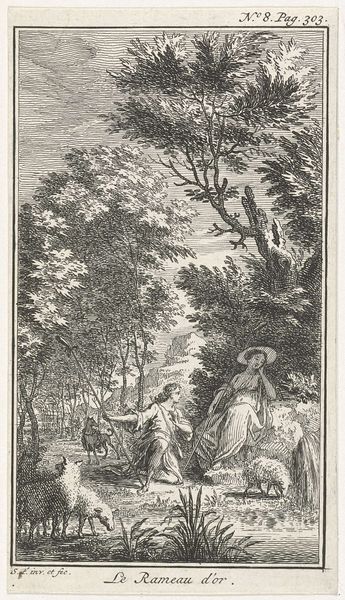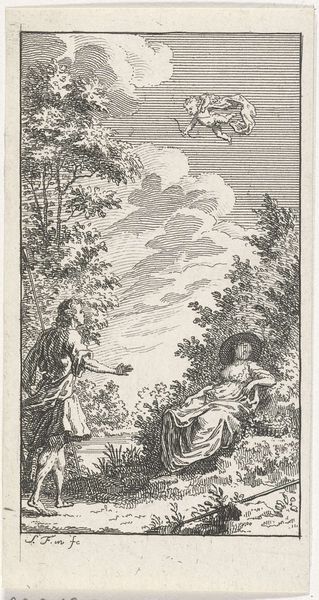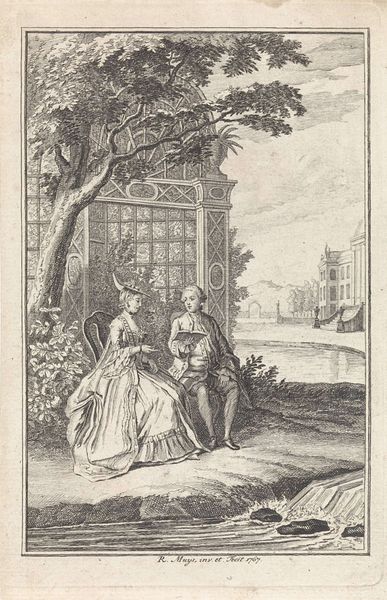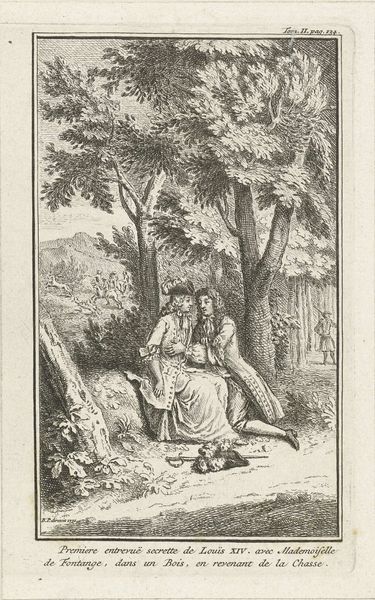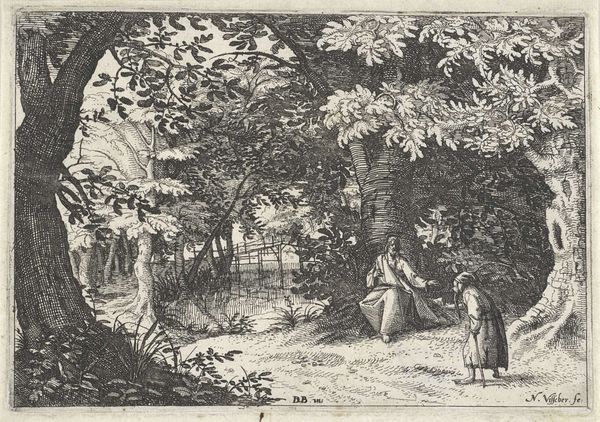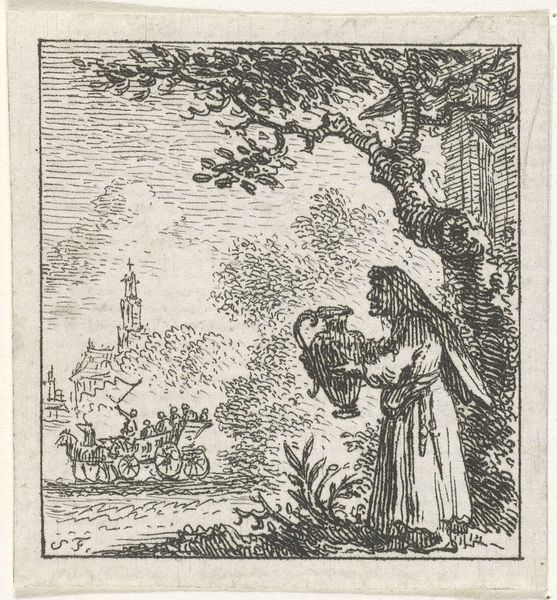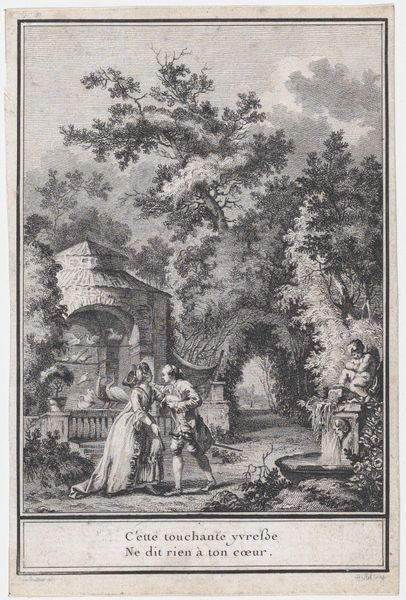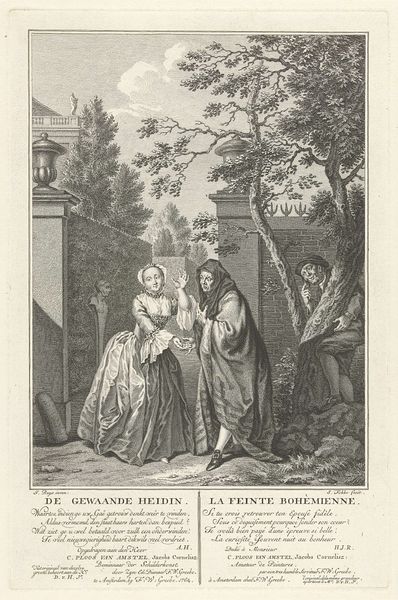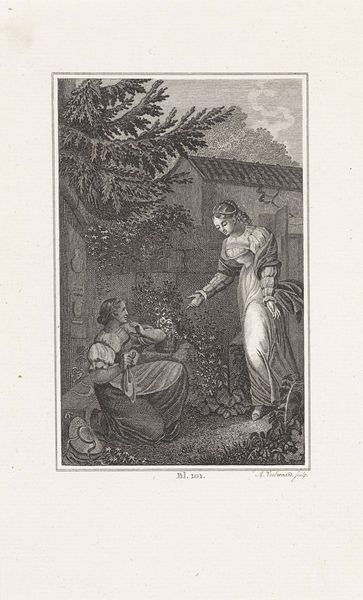
Dimensions: height 173 mm, width 108 mm
Copyright: Rijks Museum: Open Domain
This etching, Vrouw Holle, was made by Simon Fokke sometime in the 18th century. Fokke, who was working during the Enlightenment, produced a print that illustrates a tale from the Brothers Grimm, who were, of course, preoccupied with the oral traditions of folk tales. In this scene, we see a young woman encountering Vrouw Holle, or Mother Hulda, a figure of German folklore associated with winter and spinning. The story tells of two sisters, one industrious, the other lazy, who are judged by Vrouw Holle based on their labor. The industrious sister is rewarded with gold, while the lazy one is covered in pitch. It reflects the era’s emphasis on morality and industriousness. It’s fascinating to consider how this narrative intersects with gender roles and class distinctions. The tale reinforces the idea that a woman’s worth is tied to her domestic labor, while also subtly commenting on the economic disparities of the time. In a society where women's opportunities were limited, stories like these served as both a moral compass and a reflection of existing social structures. It's interesting to consider the cultural anxieties around female labor, virtue, and the rewards and punishments meted out by figures of authority.
Comments
No comments
Be the first to comment and join the conversation on the ultimate creative platform.
